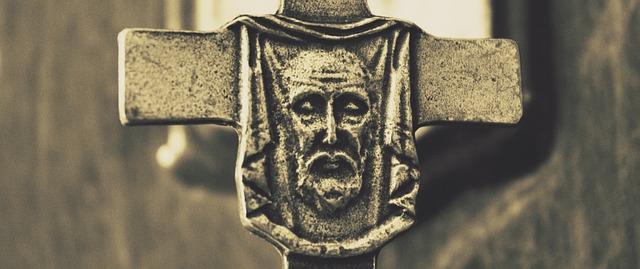In the dimly lit corridors of horror cinema, few films have left as indelible a mark as “The Exorcist.” Released in 1973, this chilling masterpiece continues to haunt audiences, not just with its spine-tingling narrative, but through its groundbreaking practical effects. As we peel back the layers of this iconic film, we uncover a masterclass in the art of horror, where tangible, meticulously crafted illusions brought unspeakable terror to life. From spinning heads to levitating bodies, “The Exorcist” set a new standard for the genre, blending creativity and craftsmanship to blur the line between reality and the supernatural. Join us as we explore the practical magic that transformed a simple tale of possession into a cinematic legend.
Crafting Nightmares: The Art of Special Effects in The Exorcist
The eerie allure of The Exorcist lies in its groundbreaking use of practical effects, which transformed ordinary scenes into visceral nightmares. Special effects artist Dick Smith masterfully manipulated prosthetics and makeup to create the infamous demonic transformations. The iconic head-spinning scene was a triumph of ingenuity, utilizing a carefully crafted dummy that spun on a hidden axis. This meticulous attention to detail is what imbued the film with a haunting realism.
- Mechanical Wizardry: Innovative animatronics were employed to achieve the unsettling bed levitation and convulsions.
- Makeup Magic: Layers of latex and paint crafted the grotesque visage of Regan, capturing the progression of possession.
- Sound and Fury: Atmospheric sound design and chilling voice modulation elevated the terrifying ambiance.
These practical effects, combined with the film’s psychological depth, cemented The Exorcist as a seminal work in horror cinema. Its legacy endures, a testament to the power of tangible artistry in evoking fear.

From Makeup Magic to Mechanical Marvels: Behind the Scenes Techniques
In the chilling world of “The Exorcist,” the boundary between reality and the supernatural was artfully blurred through ingenious practical effects. Makeup artist Dick Smith transformed Linda Blair into the possessed Regan with groundbreaking techniques. Using layers of latex and paint, Smith created the iconic, haunting visage that still sends shivers down audiences’ spines. His mastery turned Blair’s youthful innocence into a terrifying embodiment of evil, demonstrating the power of makeup to conjure nightmares.
Beyond makeup, the film’s mechanical effects played a crucial role in creating its eerie atmosphere. Mechanical rigs and hidden wires were meticulously employed to achieve the unsettling levitation scenes and furniture movements. The infamous head-spinning sequence was a marvel of engineering, crafted with a lifelike dummy that seamlessly integrated with live-action shots. These practical effects, devoid of modern CGI, relied on craftsmanship and creativity, proving that the tangible can be far more terrifying than the digital.
- Makeup Techniques: Latex, paint, and prosthetics.
- Mechanical Innovations: Rigs, wires, and lifelike dummies.

Authenticity in Horror: How Practical Effects Elevate Fear
In an era where CGI often dominates the horror landscape, The Exorcist stands as a testament to the visceral power of practical effects. The film’s creators harnessed tangible, real-world techniques to craft an atmosphere of relentless dread, ensuring that every shiver and scream felt disturbingly genuine. From the eerie, contorted movements of Regan to the unsettlingly realistic projectile vomit, these effects were not just about visual spectacle—they were integral to the film’s psychological terror.
- Physicality of Fear: The use of makeup and prosthetics brought a tangible reality to Regan’s transformation, making each stage of her possession horrifyingly believable.
- Sound and Silence: The practical effects team meticulously crafted soundscapes that complemented the visuals, using real sounds to enhance authenticity.
- Mechanical Mastery: The infamous bed shaking scene was achieved with a combination of mechanical ingenuity and practical rigging, immersing the audience in the chaos.
These practical effects did more than scare—they grounded the supernatural in a stark, unsettling reality. By focusing on authenticity, The Exorcist not only terrified audiences but also set a high bar for horror filmmakers seeking to create truly immersive and enduring fear.

Lessons from a Legend: Implementing Classic Techniques in Modern Filmmaking
The genius of The Exorcist lies in its seamless integration of practical effects, a testament to the creativity and resourcefulness of its time. William Friedkin, the director, understood that the most terrifying experiences are often those that feel real. By using practical effects, he grounded the supernatural horror in authenticity, creating visceral reactions from audiences.
- Mechanical Innovations: The famous head-spinning scene was achieved through a meticulously crafted mechanical dummy, showcasing the power of tangible effects.
- Makeup Mastery: The transformation of Regan was brought to life with prosthetics and makeup, allowing for gradual and horrifying changes that digital effects often struggle to replicate.
- Sound Design: The chilling soundscape, from demonic voices to eerie silence, was crafted using everyday objects, highlighting the impact of innovative sound design.
Modern filmmakers can draw from these techniques by embracing practical effects to enhance realism, invoking genuine fear through tactile experiences that engage the audience on a deeper level.

